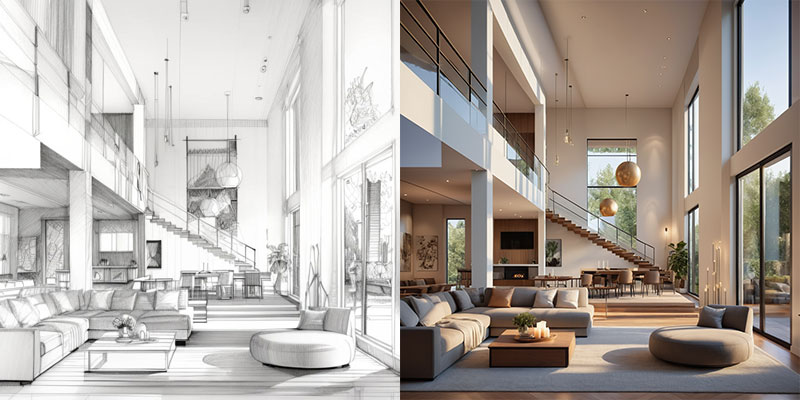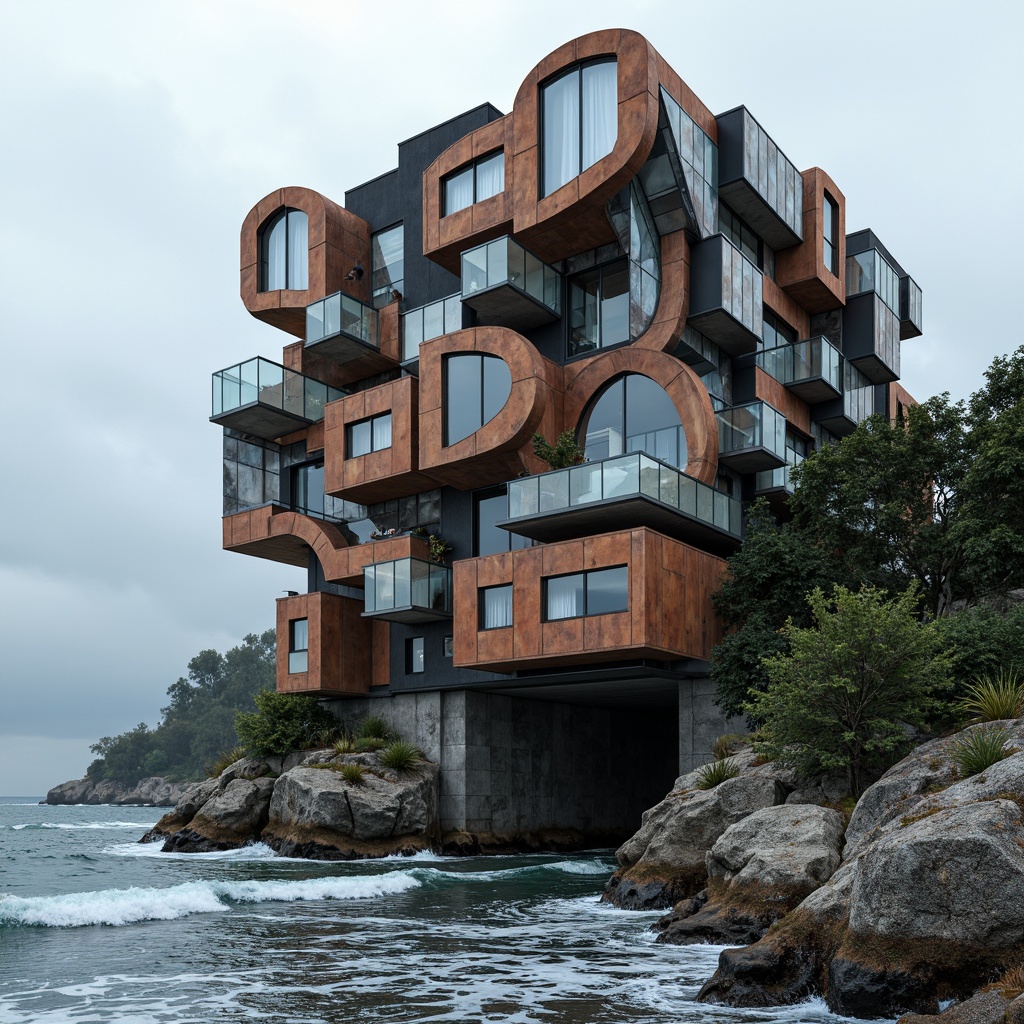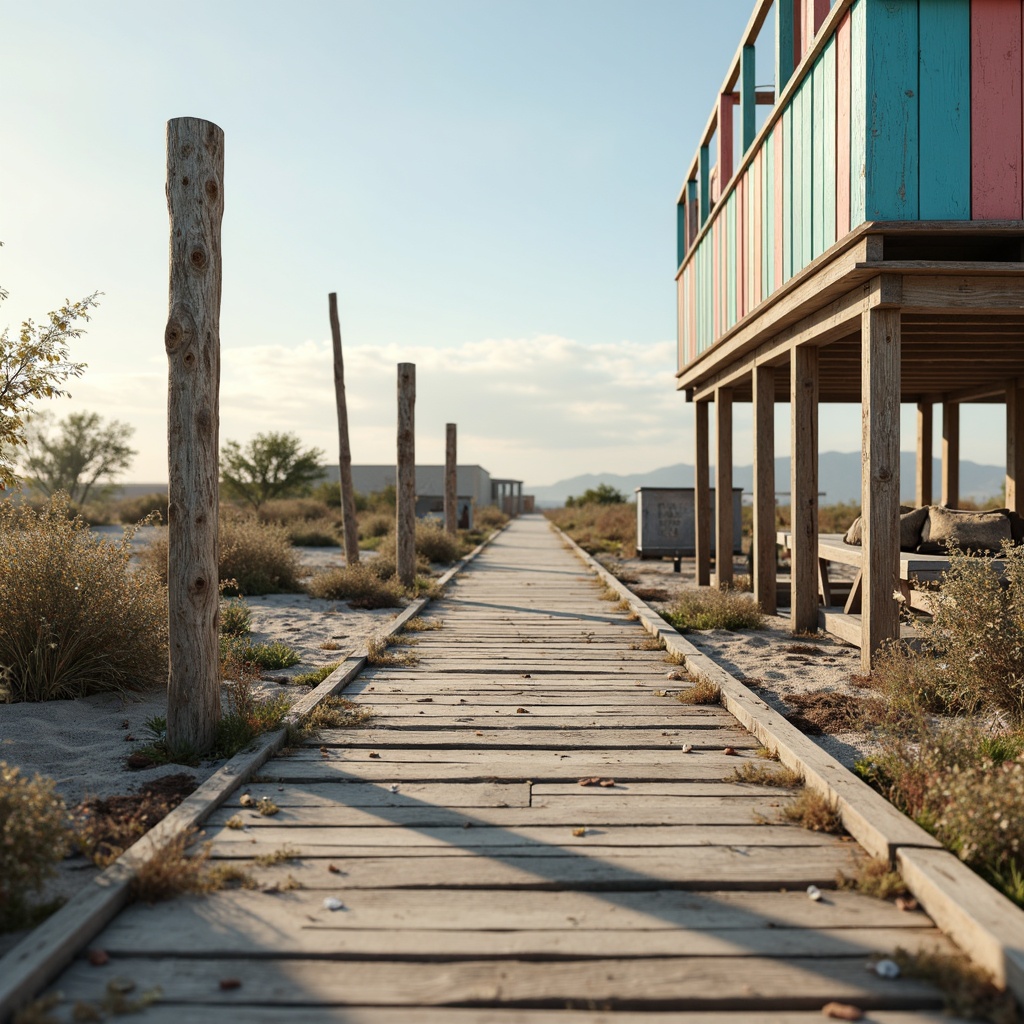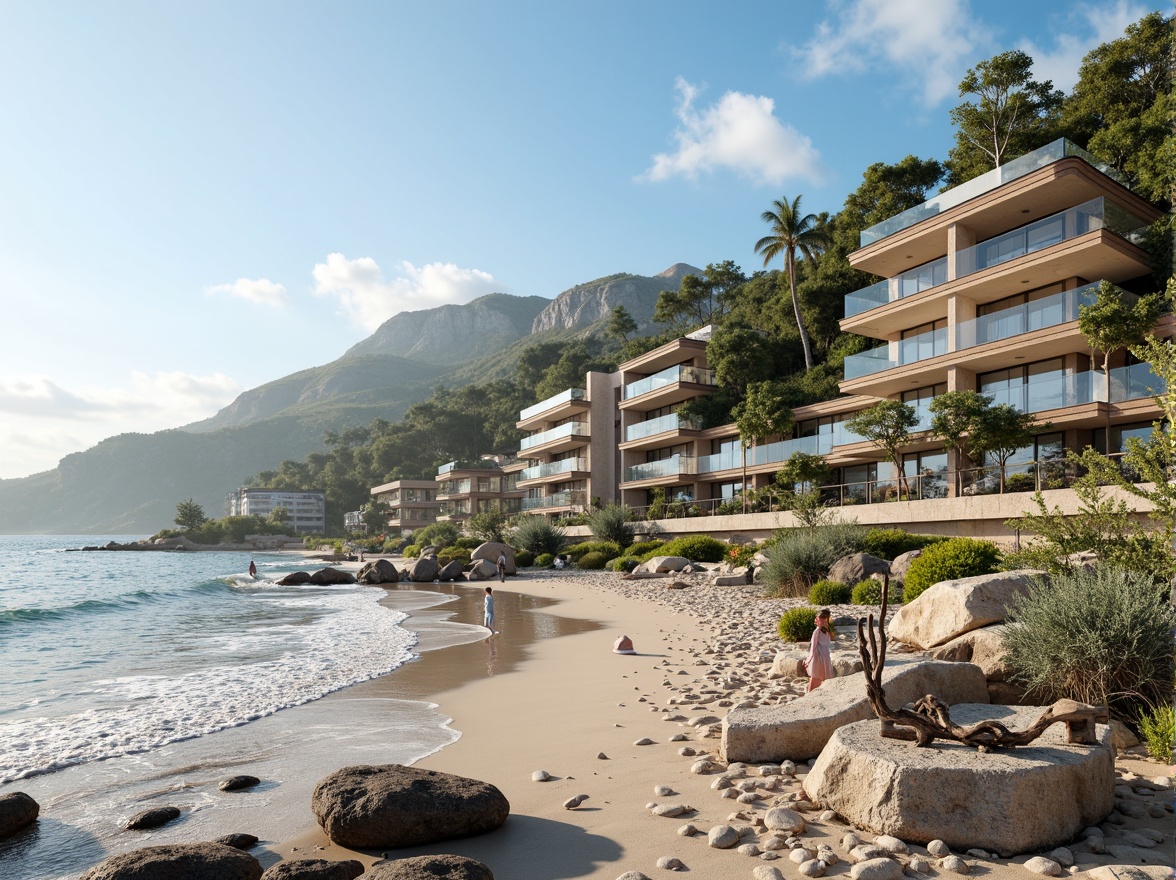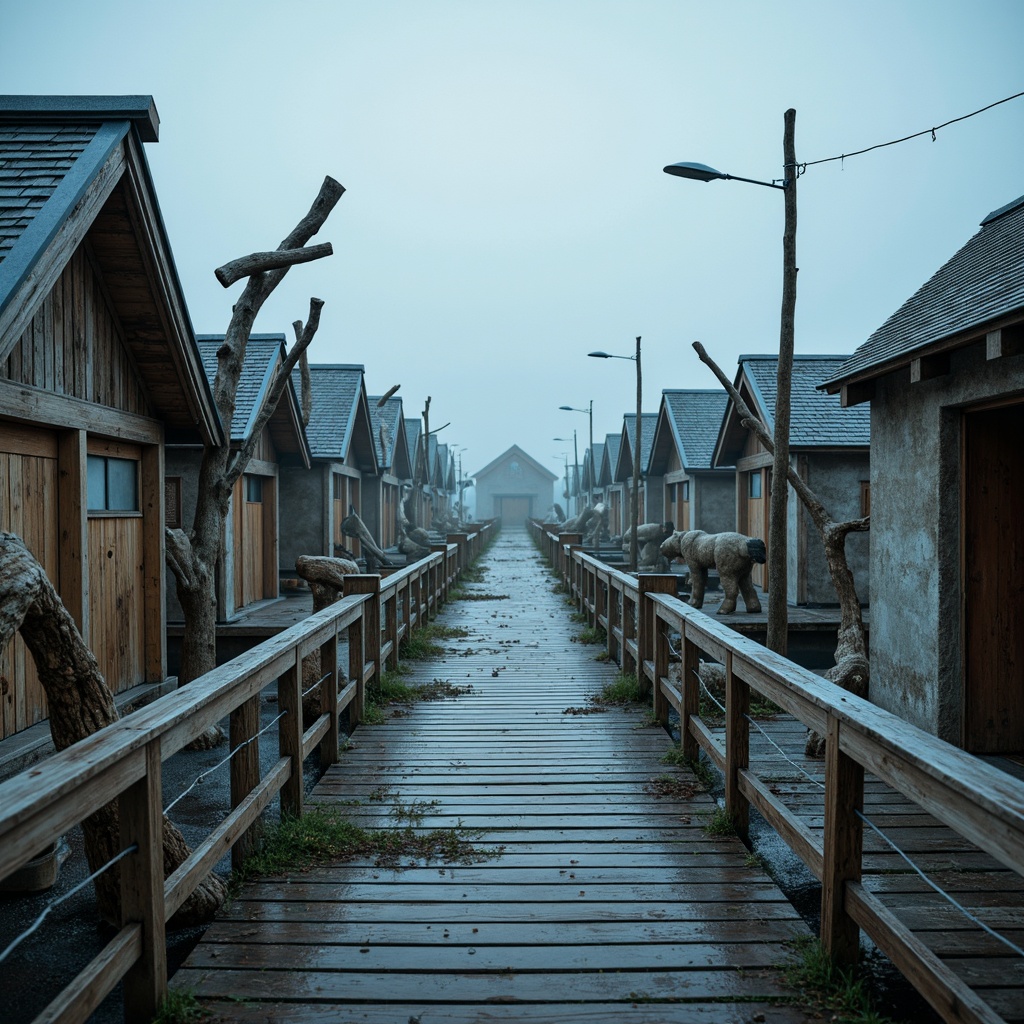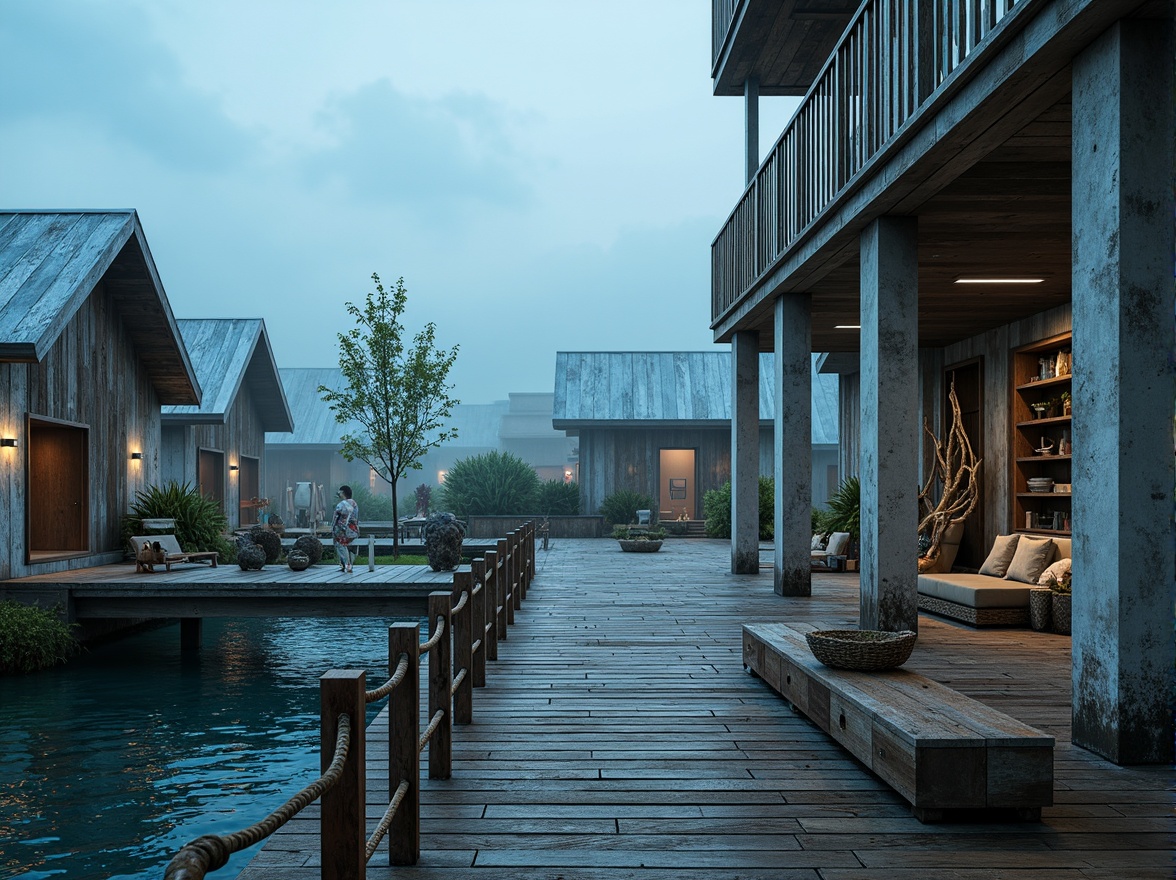Invite Friends and Get Free Coins for Both
Design ideas
/
Architecture
/
Gallery
/
Deconstructivism Style Coastal Building Architecture Design Ideas
Deconstructivism Style Coastal Building Architecture Design Ideas
Deconstructivism style in architecture provides a unique and innovative approach to design, characterized by its fragmented forms and unconventional shapes. This style emphasizes a departure from traditional architectural conventions, allowing for creative freedom and exploration of materials and colors. In coastal buildings, the use of sandstone materials and powder blue colors creates a harmonious blend with the surrounding landscape, enhancing the aesthetic appeal and functionality of the space. This collection showcases 50+ inspiring design ideas that embody the essence of Deconstructivism style, perfect for architects and designers looking to push the boundaries of architectural creativity.
Exploring Facade Design in Deconstructivism Coastal Architecture
Facade design is a crucial aspect of Deconstructivism, as it sets the tone for the overall aesthetic of the building. In coastal architecture, the facade often incorporates dynamic shapes and forms that reflect the natural environment. The use of sandstone materials not only adds texture but also blends seamlessly with the coastal landscape, creating a visually striking appearance. This section delves into various facade design strategies that can enhance the uniqueness of your coastal building projects.
Prompt: Fragmented coastal facade, irregular shapes, distorted proportions, unconventional materials, rusted metal cladding, weathered wood accents, dynamic curves, fractured lines, abstract forms, ocean-inspired patterns, turbulent waves, sea spray, misty atmosphere, dramatic lighting, bold color contrasts, deconstructivist principles, postmodern influences, futuristic undertones, cantilevered structures, asymmetrical compositions, 3/4 perspective, shallow depth of field, cinematic framing, high-contrast textures, ambient occlusion.
Creating a Stunning Color Palette for Coastal Buildings
The color palette is essential in defining the mood and character of any architectural design. For Deconstructivism style coastal buildings, a powder blue color can evoke a sense of tranquility while complementing the oceanic surroundings. This section explores how to effectively combine this color with other shades to create a cohesive and appealing look that resonates with the coastal vibe, ensuring your building stands out while harmonizing with nature.
Prompt: Weathered wooden docks, driftwood accents, sea-salt air, ocean-inspired hues, soft blues, calming whites, sandy neutrals, coral pinks, sunny yellows, nautical navy, rustic metal details, distressed finishes, natural textures, beachy vibes, serene atmosphere, warm golden lighting, shallow depth of field, 1/1 composition, realistic renderings, ambient occlusion.
Prompt: Weathered wooden docks, driftwood accents, sea-salt air, ocean-inspired hues, soft blues, calming whites, sandy neutrals, coral pinks, sunny yellows, nautical navy, rustic metal details, distressed finishes, natural textures, beachy vibes, serene atmosphere, warm golden lighting, shallow depth of field, 1/1 composition, realistic renderings, ambient occlusion.
The Importance of Material Texture in Deconstructivism
Material texture plays a pivotal role in the sensory experience of architectural spaces. In Deconstructivism, the choice of materials like sandstone not only provides durability but also adds depth and richness to the design. This section highlights how varying textures contribute to the overall aesthetic and feel of coastal buildings, enhancing both their visual appeal and functionality.
Prompt: Deconstructed building facade, fragmented concrete walls, rough-hewn stone textures, distressed metal surfaces, weathered wood accents, abstract geometric patterns, irregular shapes, clashing material contrasts, bold color schemes, dynamic lighting effects, high-contrast shadows, dramatic atmospheric perspective, 1/1 composition, cinematic camera angles, realistic rendering, ambient occlusion.
Landscape Integration in Coastal Architecture
Integrating architecture with the landscape is a fundamental principle in Deconstructivism. Coastal buildings must consider their surroundings to create a cohesive relationship with nature. This section discusses strategies for effective landscape integration, including the use of native plants and materials that enhance the building's connection to the environment while maintaining the integrity of the architectural design.
Prompt: Seaside coastal architecture, oceanfront villas, sandy beaches, rocky shores, driftwood sculptures, nautical ropes, weathered wooden decks, sea-salt air, misty mornings, warm sunlight, soft blue skies, gentle waves, beachside promenades, seaside restaurants, sailing boats, lighthouses, marine life, coral reefs, ocean-inspired color palette, natural textures, organic forms, curved lines, sustainable building materials, green roofs, solar panels, wind turbines, eco-friendly design, panoramic views, 3/4 composition, realistic rendering, ambient occlusion.
Prompt: Seaside coastal architecture, oceanfront villas, sandy beaches, rocky shores, driftwood accents, nautical ropes, sailboat-inspired design, curved lines, weathered wood textures, sea-salt air, misty mornings, warm sunlight, soft focus, shallow depth of field, 1/2 composition, panoramic view, realistic water effects, ambient occlusion, beachside promenades, seaside walkways, oceanview balconies, tropical plants, palm trees, succulent gardens.
Enhancing Spatial Flow in Coastal Deconstructivism Designs
Spatial flow is essential in creating functional and inviting spaces within any architectural design. In Deconstructivism, unconventional forms can lead to innovative spatial arrangements that challenge traditional layouts. This section explores how to enhance spatial flow in coastal buildings, ensuring that each area is not only aesthetically pleasing but also practical and user-friendly.
Prompt: Weathered wooden docks, rusty metal railings, driftwood sculptures, oceanic blue hues, salty misty atmosphere, deconstructed beach huts, fragmented concrete walls, reclaimed wood accents, nautical rope details, distressed finishes, organic curves, asymmetrical compositions, dramatic natural lighting, shallow depth of field, 1/2 composition, cinematic perspective, realistic textures, ambient occlusion.
Prompt: Weathered wooden docks, rusty metal railings, driftwood sculptures, oceanic blue hues, salty misty atmosphere, deconstructed beach huts, fragmented concrete walls, reclaimed wood accents, nautical rope details, distressed finishes, organic curves, asymmetrical compositions, dramatic natural lighting, shallow depth of field, 1/2 composition, cinematic perspective, realistic textures, ambient occlusion.
Prompt: Weathered wooden docks, rusty metal railings, driftwood sculptures, oceanic blue hues, salty misty atmosphere, deconstructed beach huts, fragmented concrete walls, reclaimed wood accents, nautical rope details, distressed finishes, organic curves, asymmetrical compositions, dramatic natural lighting, shallow depth of field, 1/2 composition, cinematic perspective, realistic textures, ambient occlusion.
Conclusion
In conclusion, Deconstructivism style offers a fresh perspective on coastal building architecture, emphasizing creativity and innovation through unique designs. By utilizing sandstone materials, a calming powder blue color palette, and focusing on aspects like facade design, material texture, landscape integration, and spatial flow, architects can create stunning structures that harmonize with their surroundings. These design principles not only enhance the visual appeal of coastal buildings but also contribute to their functionality, making them a valuable choice for modern architectural projects.
Want to quickly try gallery design?
Let PromeAI help you quickly implement your designs!
Get Started For Free
Other related design ideas

Deconstructivism Style Coastal Building Architecture Design Ideas

Deconstructivism Style Coastal Building Architecture Design Ideas

Deconstructivism Style Coastal Building Architecture Design Ideas

Deconstructivism Style Coastal Building Architecture Design Ideas

Deconstructivism Style Coastal Building Architecture Design Ideas

Deconstructivism Style Coastal Building Architecture Design Ideas

